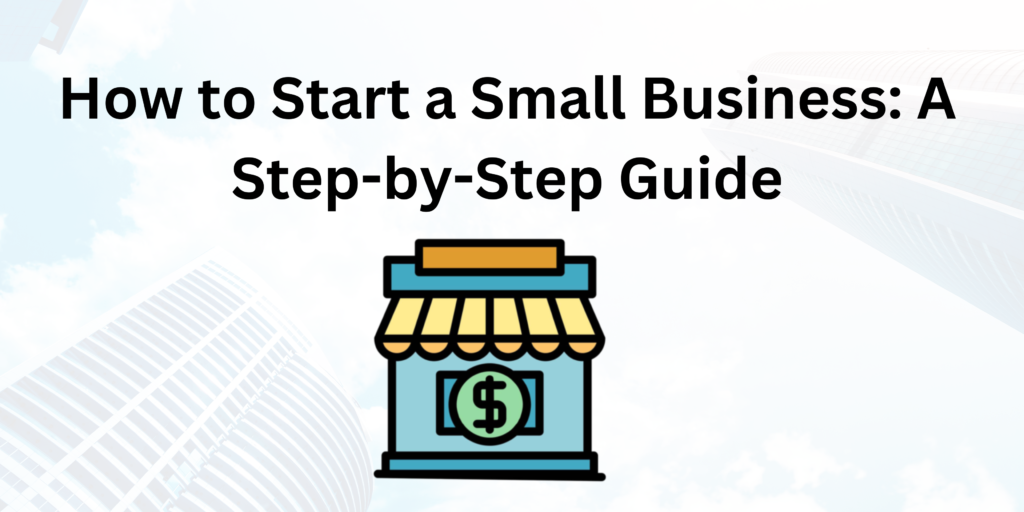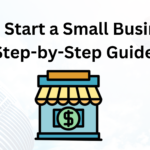![]()
1. Identify Your Business Idea
Every successful business starts with a great idea. Consider your interests, skills, and the market demand when choosing your business idea. Ask yourself:
- What problems can I solve?
- What are people willing to pay for?
- How can I differentiate myself from existing competitors?
2. Conduct Market Research
Before diving into your business, it’s crucial to understand your target market and industry. Conduct market research to gather insights on:
- Customer demographics and preferences
- Competitors and their strengths/weaknesses
- Market trends and opportunities
This research will help you refine your business idea and create a product or service that meets the needs of your target audience.
3. Write a Business Plan
A business plan is a roadmap for your business, outlining your goals, strategies, and the steps you’ll take to achieve them. Your business plan should include:
- Executive summary: A brief overview of your business
- Company description: What your business does and what sets it apart
- Market analysis: Insights from your market research
- Organization and management: Your business structure and team
- Products or services: What you’re offering and how it benefits customers
- Marketing and sales strategy: How you’ll attract and retain customers
- Financial projections: Expected revenue, expenses, and profitability
4. Choose Your Business Structure
Decide on the legal structure of your business. The most common options include:
- Sole Proprietorship: Simplest form, owned by one person
- Partnership: Owned by two or more people
- Limited Liability Company (LLC): Offers liability protection and flexibility
- Corporation: A more complex structure with shareholders
Your choice will affect your taxes, liability, and how you operate your business.
5. Register Your Business
Once you’ve chosen your business structure, you’ll need to register your business with the appropriate government authorities. This typically involves:
- Registering your business name (if it’s different from your own name)
- Obtaining an Employer Identification Number (EIN) from the IRS (in the U.S.)
- Applying for any necessary licenses and permits
6. Secure Funding
Determine how much money you need to start and run your business until it becomes profitable. Common funding options include:
- Personal savings
- Loans from banks or credit unions
- Small business grants
- Venture capital or angel investors
- Crowdfunding platforms
Be realistic about your financial needs and plan for unexpected expenses.
7. Set Up Your Business Operations
Establish the operational aspects of your business, including:
- Location: Decide whether you’ll operate from home, rent a space, or go online-only.
- Suppliers and Inventory: If you’re selling products, establish relationships with suppliers and manage your inventory efficiently.
- Technology and Equipment: Invest in the tools and technology you need to run your business, such as computers, software, and point-of-sale systems.
- Legal and Accounting: Consider hiring a lawyer and accountant to ensure you’re compliant with laws and manage your finances effectively.
8. Develop Your Brand
Your brand is how customers perceive your business. Create a strong brand identity by:
- Designing a memorable logo
- Creating a professional website
- Establishing a presence on social media
- Crafting a clear and compelling brand message
Your brand should reflect your business’s values and resonate with your target audience.
9. Launch Your Business
With everything in place, it’s time to launch your business. Consider starting with a soft launch to test your operations and gather feedback before going public. Promote your launch through:
- Social media campaigns
- Email marketing
- Press releases
- Local events or partnerships
Offer special promotions or discounts to attract your first customers.
10. Focus on Growth
Once your business is up and running, the focus shifts to growth. Continuously evaluate your performance and look for ways to improve. Consider:
- Expanding your product or service offerings
- Reaching new markets or customer segments
- Improving customer service and experience
- Investing in marketing and advertising
Stay adaptable and open to change as you navigate the challenges and opportunities of running a small business.
Boshir




